Jasper Morrison speaks with Alice Blackwood about his work on the Hiroshima range for Maruni.
April 15th, 2011
“It was last year, or just before, that I started working on the Hiroshima project,” explains English designer, Jasper Morrison. “This is really the beginning of the new Maruni, with Art Director Naoto Fukasawa.
“We are good friends, and have a common idea of design should be. I’m living partly in Japan, which is another reason we met and [got along].
“He invited me to do this project, and so I was looking at what Naoto had done, and what to do for a solid wood chair.”
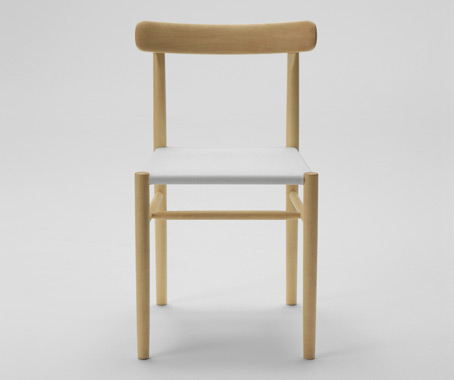
“Naoto’s chairs are quite sculptural and very beautiful shapes and I thought I should do something similar, but in another way. A chair was very light… and that was the first thought.”
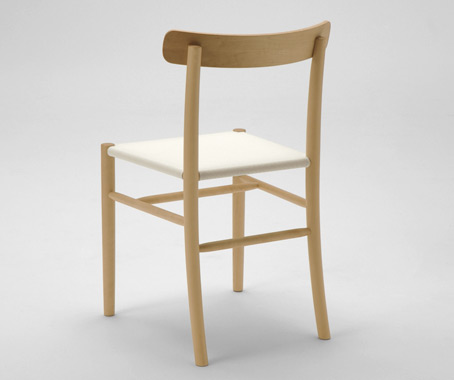
“We went together to the factory and looked at the facilities. One of the problems of the production system, where they use solid wood for the seat – it’s very expensive and heavy.
“The idea came to me to make a frame for the seat using different materials such as webbing or mesh. That makes it very light and it’s quite affordable. We have other versions – with upholstery fabric, and also leather.
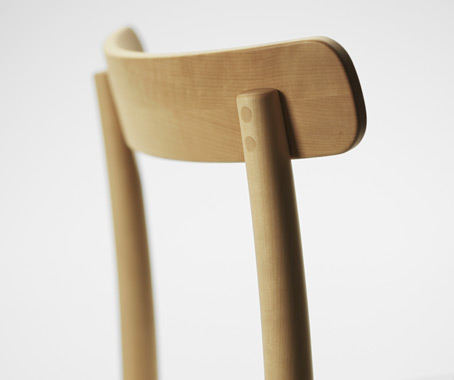
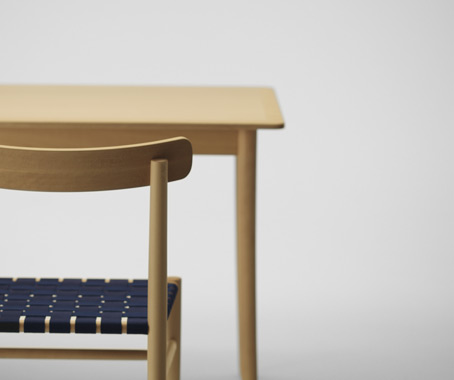
“But I like the combination of the synthetic webbing with this beautiful wood.
“Working with Maruni, it’s the discovery of a new level of quality, I’ve never worked with a company before that have that quality.
“When I visit a factory to check a prototype I have a trick; I take a tape measure to measure the chair, which gives me a bit of time to think before I tell the producer what I think.

“In the measuring, usually I find something wrong – ’Oh, the distance between the legs is wrong, anyway it’s not so bad… perhaps we can change this or this…’
“I was measuring the prototype at the factory for Maruni and there was nothing wrong. I had nothing to say!”
Check out all of Indesign’s Milan coverage here
Available in Singapore at atomi
atomi-jp.com
Available in Australia at Seeho Su
seehosu.com.au
INDESIGN is on instagram
Follow @indesignlive
A searchable and comprehensive guide for specifying leading products and their suppliers
Keep up to date with the latest and greatest from our industry BFF's!

A longstanding partnership turns a historic city into a hub for emerging talent

Welcomed to the Australian design scene in 2024, Kokuyo is set to redefine collaboration, bringing its unique blend of colour and function to individuals and corporations, designed to be used Any Way!

For Aidan Mawhinney, the secret ingredient to Living Edge’s success “comes down to people, product and place.” As the brand celebrates a significant 25-year milestone, it’s that commitment to authentic, sustainable design – and the people behind it all – that continues to anchor its legacy.

As CEO of the Living Future Institute of Australia (LFIA), Laura Hamilton-O’Hara is concerned with how various factors come together to produce our built environment. Initiatives such as the Living Building Challenge are pushing towards a sustainable status quo.

Here we present 9 projects and designers leading us towards a culturally informed future that puts caring for Country and connection to Country and First Nations culture at the centre of both practice and outcome.
The internet never sleeps! Here's the stuff you might have missed

The shared Melbourne office brings together Studio 103 and McCormack in a dual headquarter that doubles as a showcase of materials and craft.
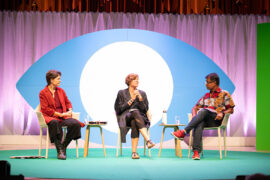
At the World Design Congress in London, a simple idea threaded through two dense days: design is not an island. It moves inside wider systems of economics, policy, finance and ecology.
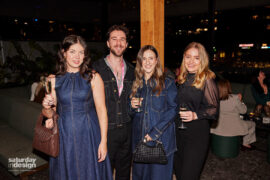
On 6th September 2025, Saturday Indesign went out with a bang at The Albion Rooftop in Melbourne. Sponsored by ABI Interiors, Woodcut and Signorino, the Afterparty was the perfect finale to a day of design, connection and creativity.

The final day of CPD Live’s 2025 season delivers three must-attend sessions exploring circular design for furniture and fitouts, and the science behind safe, high-quality drinking water. Starting from 9 AM AEDT, 16th October – it’s your last opportunity this year to join our Live CPD sessions and finish 2025 inspired.